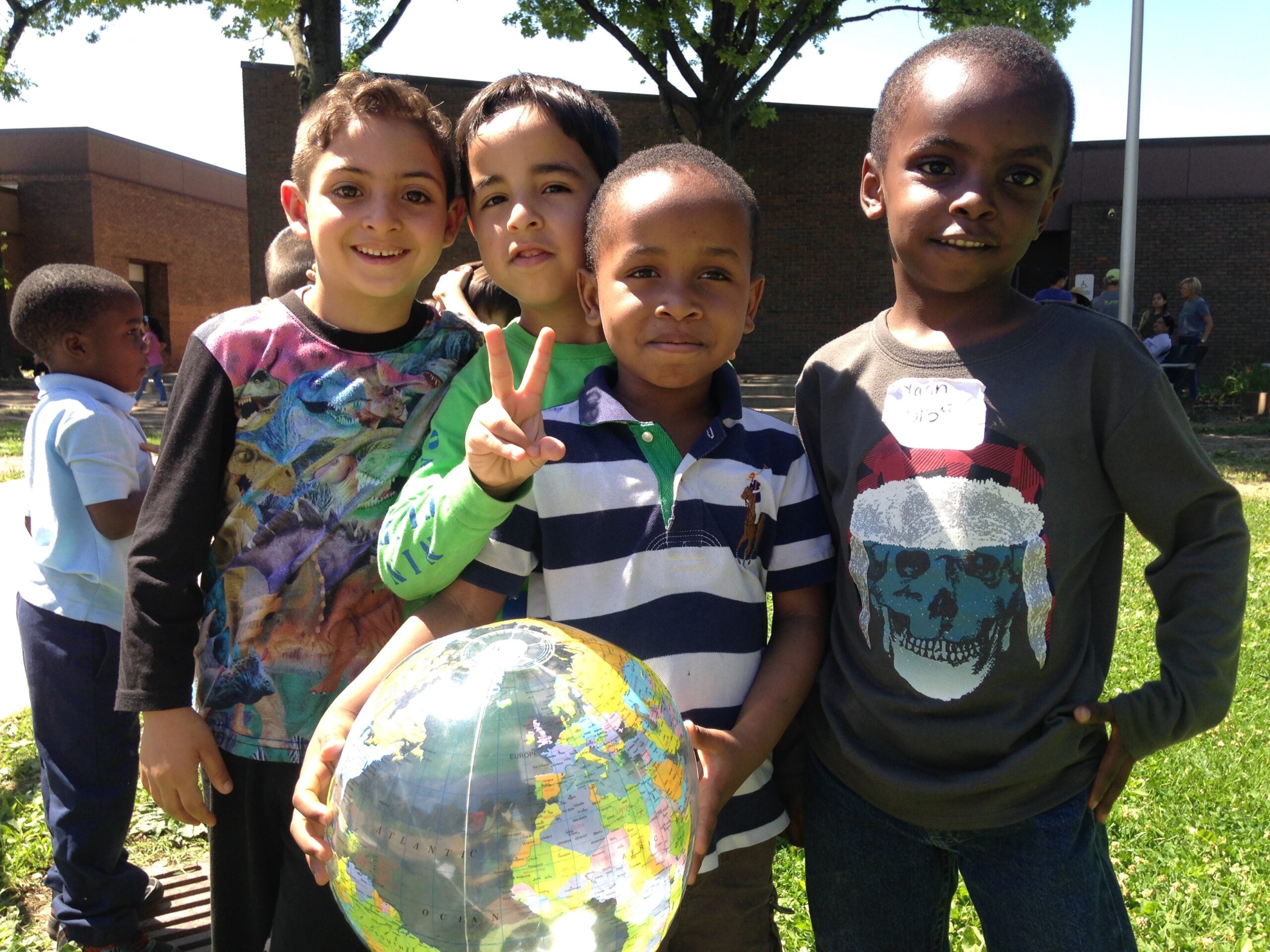Summer School in the International Garden
This summer, Gateway Greening Educators Meg Holmes and Lucy Herleth had the opportunity to be a part of the Nahed Chapman New American Academy garden’s story by participating in summer school.
Meet the International Welcome School Garden
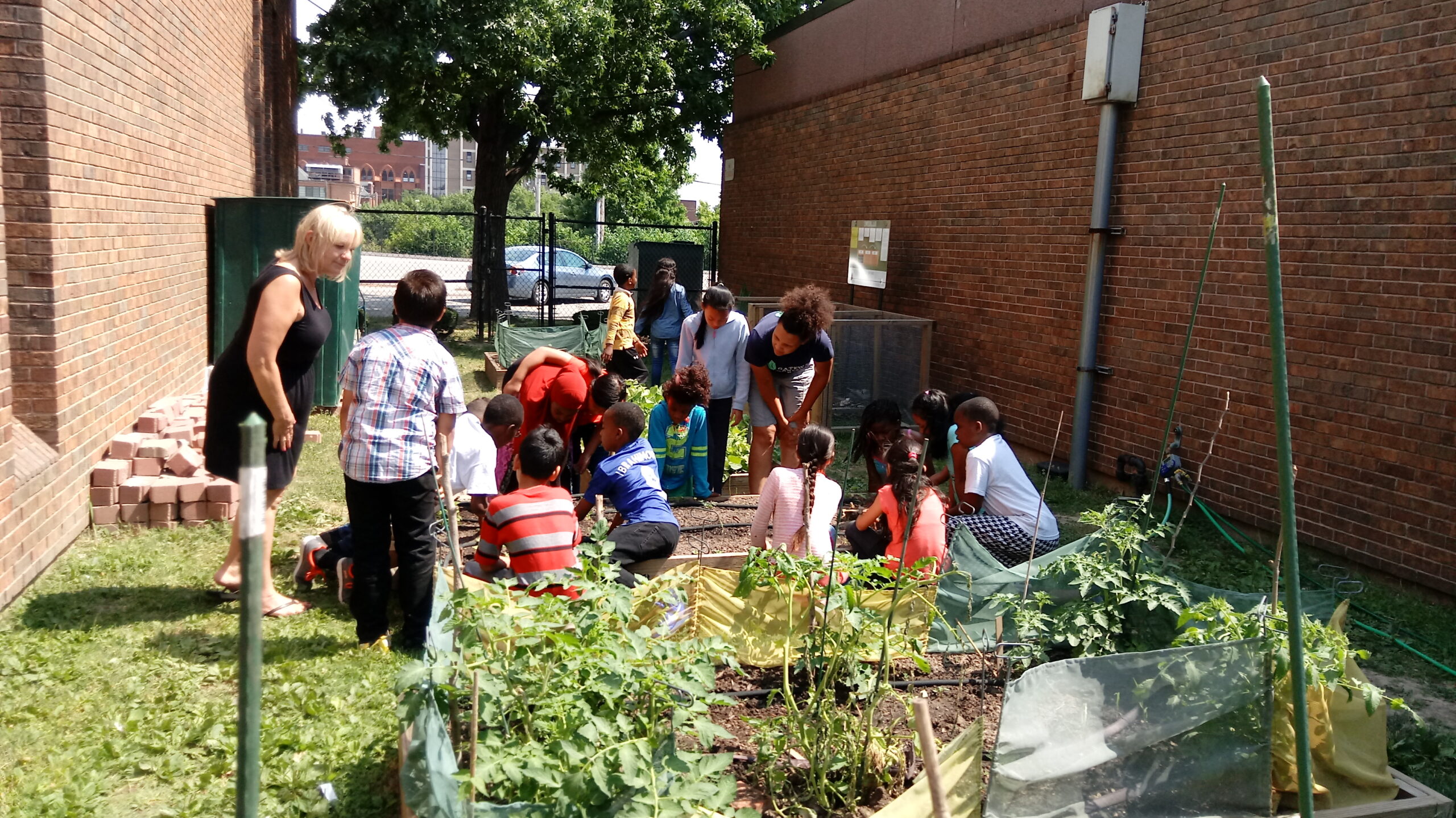
“My original question was…Can we provide refugee students with information that can assist them in overcoming the unique challenges that exist in their classrooms? As the nation’s demographics change, so does our responsibility to meet the needs of this diverse student body. These students have significant implications for educational and social policy. One component of the Nahed Chapman New American Academy ecological milieu was to provide avenues for in-depth discussions of practices that can help all students make informed choices when it comes to our environment. As a result of those discussions, surveys were taken and students decided to plan and grow an International Garden.” – Nelver Brooks, educator and garden leader at the Nahed Chapman New American Academy
Read the rest of Nelver Brooks original story of the International Garden’s founding: The Journey Begins with Us, on the Gateway Greening Blog.
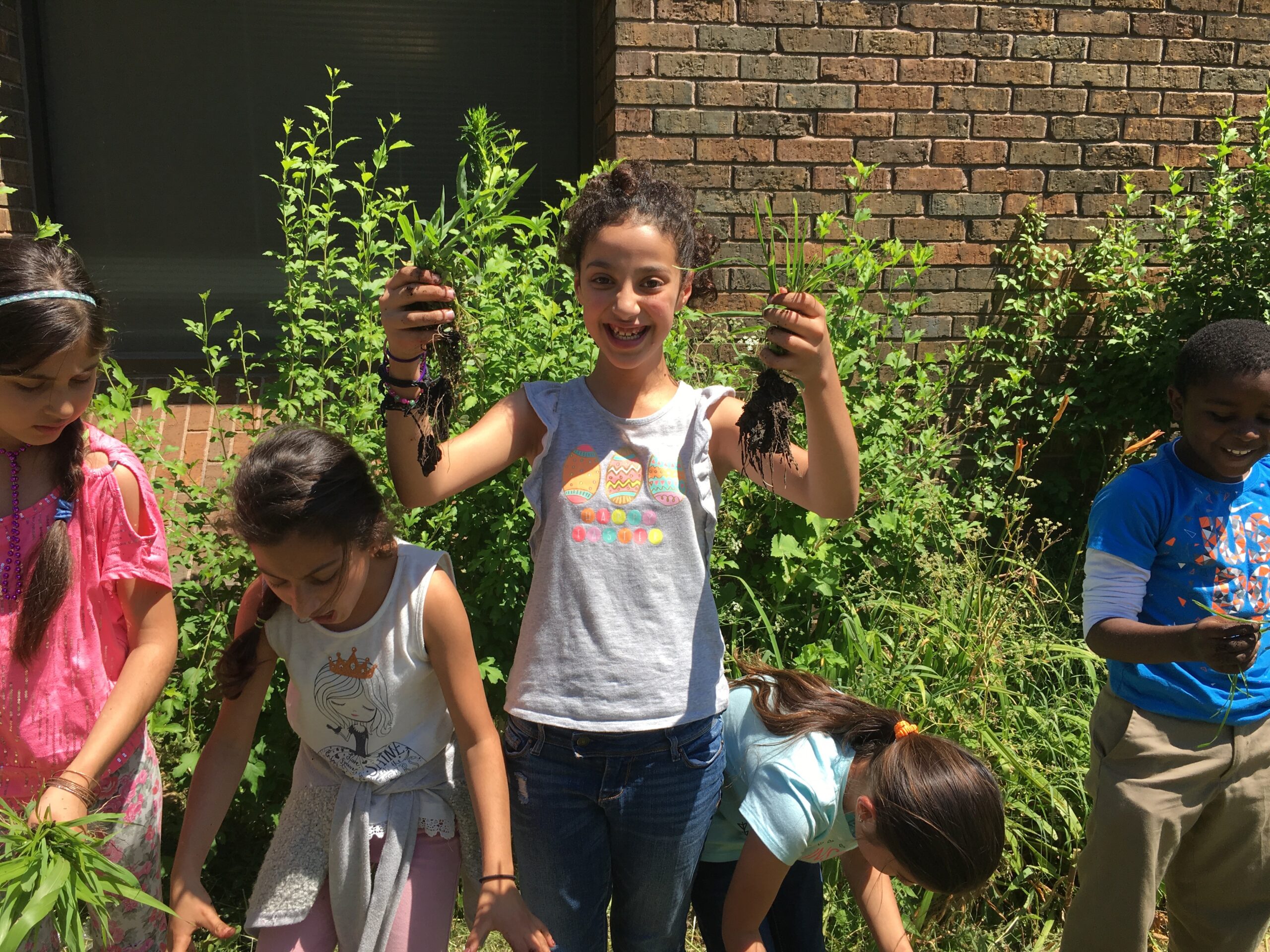
“The first week of summer school, many students visited the school garden for the very first time. They looked around for different parts of plants and noticed how plants changed as they grew. They inspected and planted tiny seeds, crouched down and counted the small seedlings, and looked around for flowers. The best part was when they discovered that the bean plants were ready to harvest. The students picked long green beans and I showed them how to carefully open the pods. Inside of the bean was a surprise – seeds! The plant’s growth was a life cycle, going from seed to seed. The kids then tasted the raw beans or fed them to the worms in the compost bin.” -Lucy Herleth
Summer School in the International Welcome School Garden
During the final week of Summer School, we caught up with Meg as she led the students through an exploration of compost and the process of decomposition.
Meg kicked off each class’s time in the garden with story time beneath the shady trees that line the school’s courtyard. Compost Stew, and A to Z Recipe for the Earth by Mary McKenna Siddals is a “rhyming recipe [that] explains how to make the dark, crumbly, rich, earth-friendly food called compost,” and is a fun way to engage students in a conversation about the compost bins in the International Welcome School Garden.
After the story, students were invited to share what they had learned, and what they might already know about composting from their home country. Moments like these are a chance to connect concepts and new vocabulary words to hands-on activities. As Meg says, “Outdoor experiential learning [is important] so that when they’re in the classroom, they have scaffolding to hang their experiences on.”
Curious about the lessons Gateway Greening Educators use in school gardens? Check out our Seed to STEM program on the Gateway Greening website to learn more!
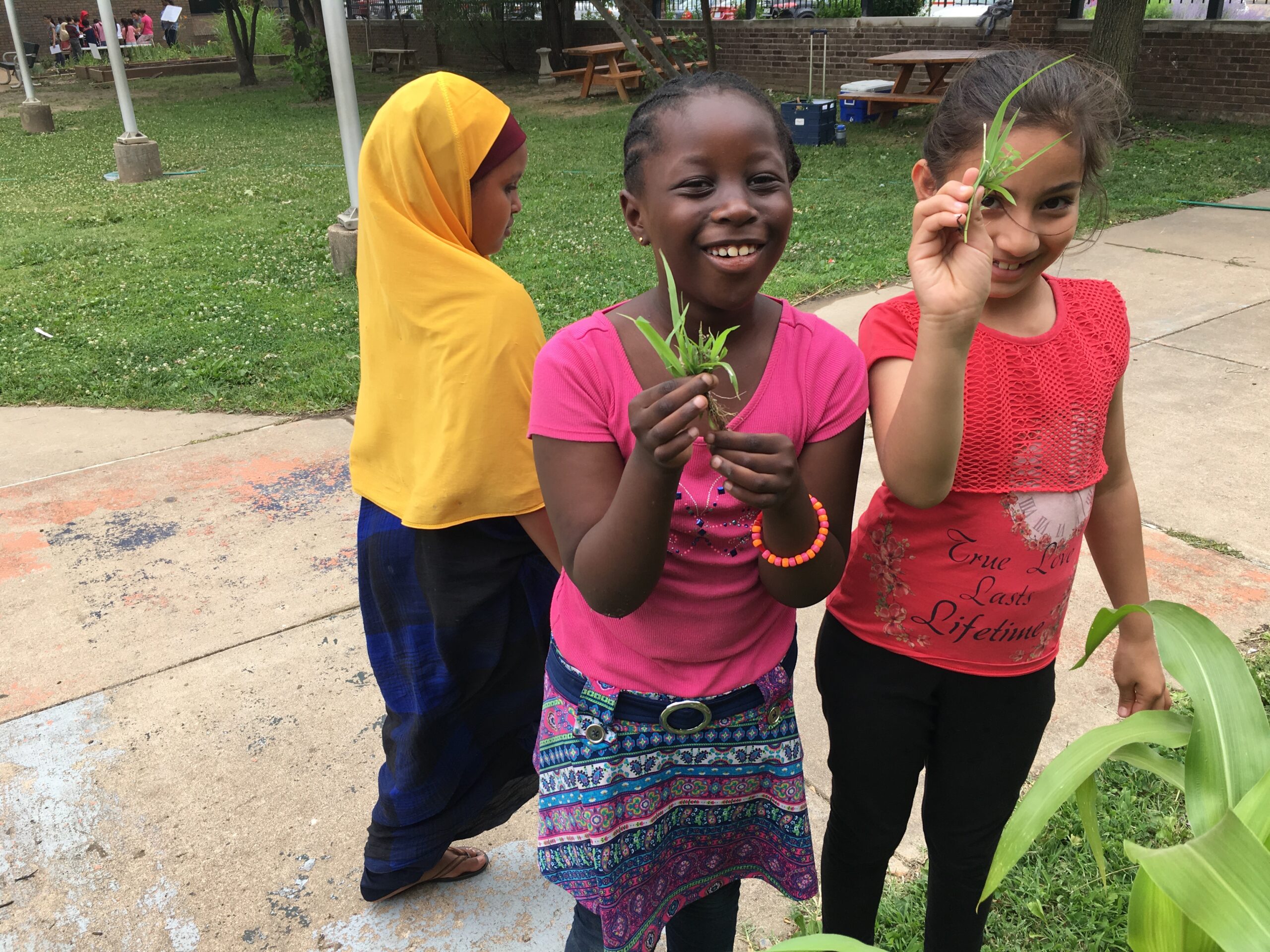
Things took a laughter-filled turn as students insisted on taking a detour to the planting beds to check on their crops. This summer, the garden is overflowing with okra, corn, cucumbers, sweet potatoes, hot peppers, eggplants, tomatoes, beans, and even wildflowers for the pollinators – all planted by the students. The detour was full of small moments of joy as students discovered new peppers or tomatoes hiding among the leaves.
Joy has been a regular guest in the International School Garden this summer:
“After learning how plants need food, water, air, and space to grow, the students enthusiastically weeded the corn garden bed. The soil was hard, so it was a struggle to get many of the weeds out by their roots. With each weed, almost every student wanted to show the teachers the plant, waving the weed proudly around. Students even discovered that some weeds at their school looked similar to weeds back in their home country.” – Lucy Herleth
Composting at School
In 2016, the International Welcome School Garden was awarded a three-bin compost system through Gateway Greening’s Garden expansion program. Designed to be easy for people of all sizes and ages to use, the compost bins are perfect for jumping in and exploring during class! Meg made the most of the students’ ‘summer energy’ with a hands-on crash course on how the compost system works.
One of the many challenges faced by urban gardeners is the constant presence of trash blowing around and the International School sees its fair share blow into the courtyard. During the lesson, Meg had each class picking up debris and deciding whether it belonged in the trash, the recycling, or the compost pile. Within no time at all the students had the garden tidied up and moved on to the next project, but the lesson they learned will continue when they return to the garden this fall.
Who knows? The Nahed Chapman New American Academy may decide to join the growing number of St. Louis schools who work with students to divert lunch room food scraps to the compost pile in the coming year.
Worms for Everyone!
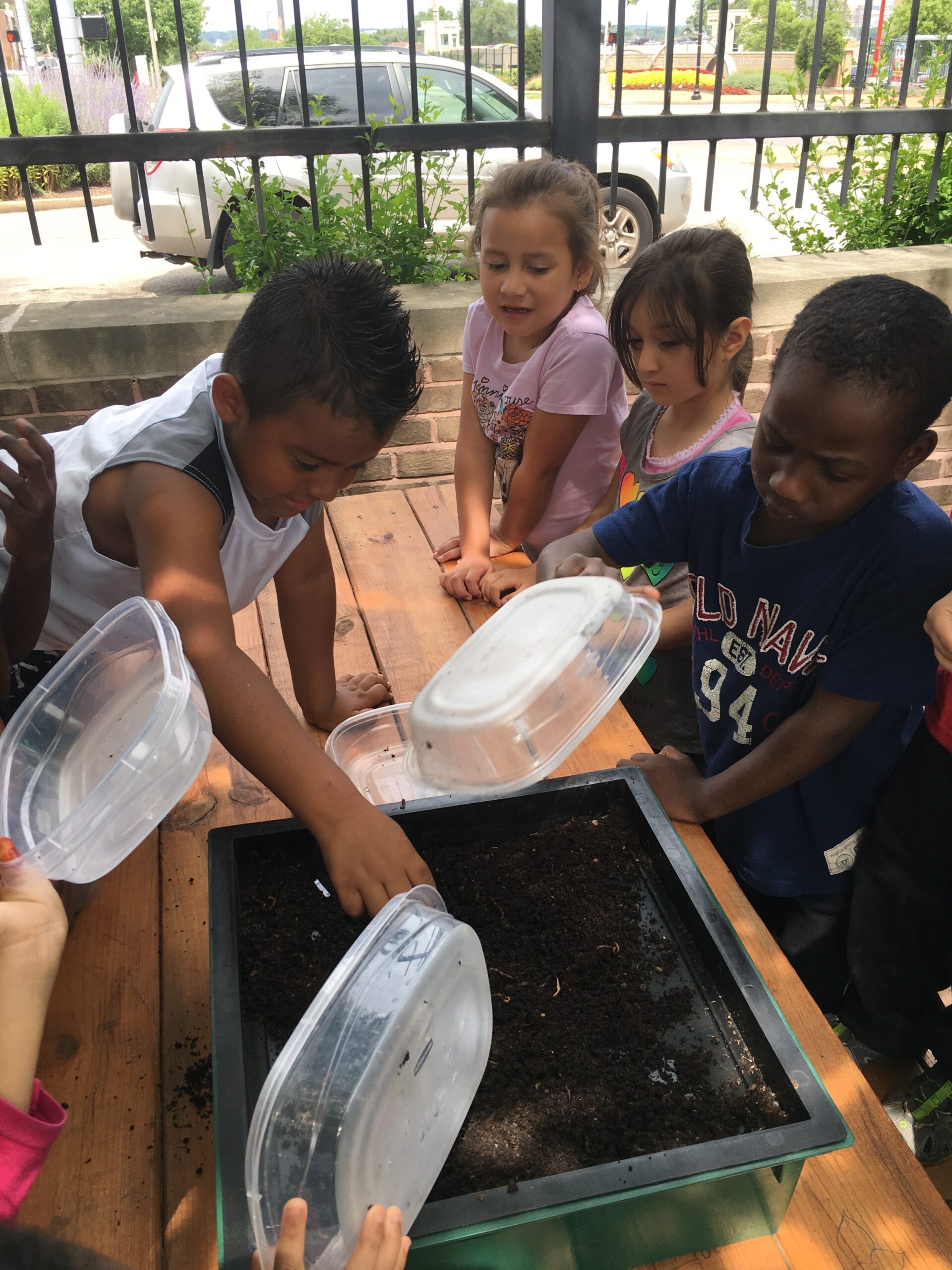
No lesson on composting could be complete without an introduction to some of our favorite decomposers – worms!
“Vermicomposting systems are easy to set up in the classroom and are a great jumping off point for lessons on energy use, decomposition, habitat, and more.” – Lucy Herleth
Many of the Academy’s students had never encountered the strange looking, wriggling creatures that are worms before and spent several minutes squealing as their peers bravely agreed to hold them. However, after a few minutes of talking about what worms are and explaining how hard they work to make the garden a healthier, more productive space, many of the students began to calm down and ask if they could hold a worm too.
Encountering new creatures, learning what they eat and how they live, can be an opportunity for each of the students to practice empathy and other social/emotional skills that are an important part of every child’s development.
What’s Next?
Summer school in the International Welcome Garden may have ended for the year, but the lessons will continue this fall when classes resume.
“Not having worked with ESL (English as a Second Language) students before, and always when you have new kids, you are a little apprehensive, but food is a great way to bring people together and it’s a great way to find common ground with anyone.” – Meg Holmes
